
Jacki Kellum Garden Wall – 2022
Garden walls serve two purposes in my garden.
- Privacy
- Intimacy
Privacy in my garden is of utmost importance. But I also create walls or screens to subdivide my large lawn into smaller intimate spaces.

Jacki Kellum Garden August 2022

Jacki Kellum Garden Wall – 2022
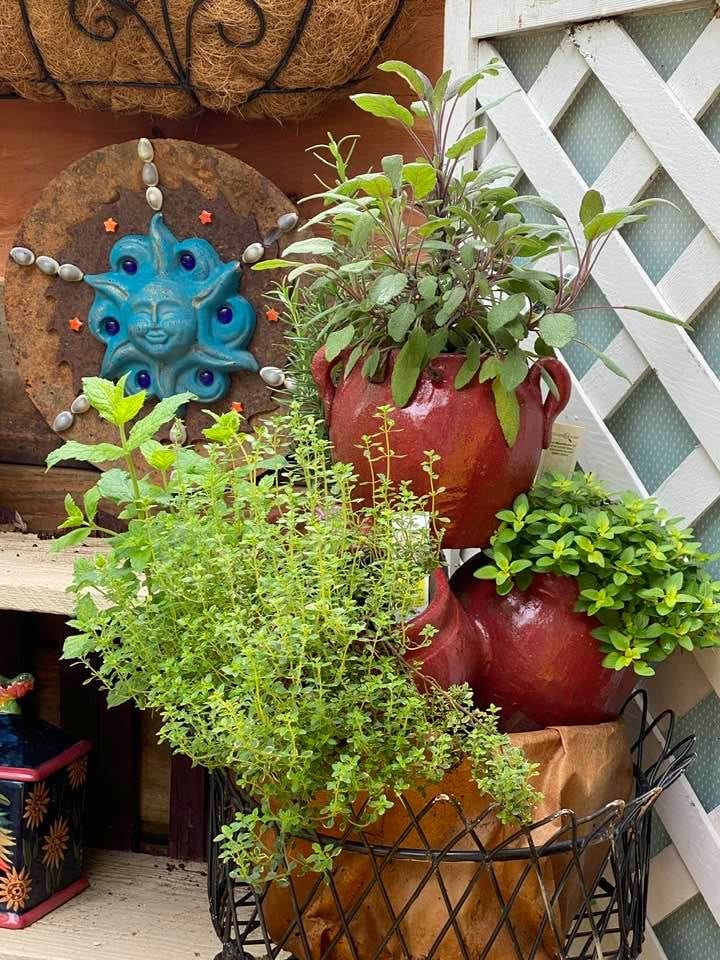
Jacki Kellum Garden Wall – 2022 – Detail from the area above
My current garden is problematic in several ways. First, I cannot go outside without seeing my neighbor’s house. Until I screen that house from my view, the rest of my efforts to create an intimate room outside will be futile.
Ultimately, I’ll build at least part of a privacy fence on that side of my yard. But a privacy fence is a bit cold and uninteresting. Regardless of whatever else I do, I also plan to create a vast hedgerow –a natural screen there, too.
The Better Homes and Gardens online site is a great place to find ideas for many garden projects. Following are some ideas that I like:
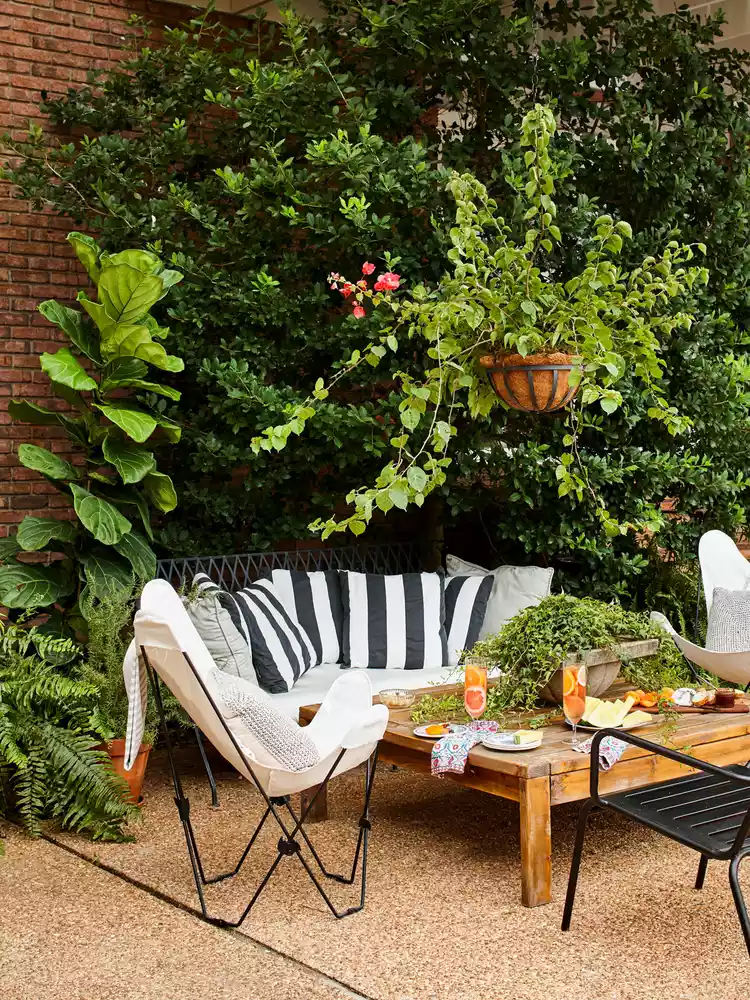
Image Credit: BHG
“While tall fences and exterior walls offer the benefit of privacy, they can also feel imposing and make a tiny patio appear even smaller. Think vertically to help disguise the walls and soften the space. Incorporate plants to make walls feel less like a sterile concrete box and more like a destination spot. Vertical gardens are particularly beneficial when space is limited since they free up valuable floor space for stylish patio furniture.”

Image Credit: BHG
“Give your favorite plants better view-blocking power by growing them in raised beds or berms. You’ll be surprised by how much more secluded your yard feels when you mound the soil enough to add a foot or two to your plants’ height. Plus, it puts medium-sized plants at eye level. Grow extra-tall perennials to create a living privacy screen quickly.” BHG 15 Simple and Effective Private Backyard Landscaping Ideas

Image Credit BHG
BHG 15 Simple and Effective Private Backyard Landscaping Ideas
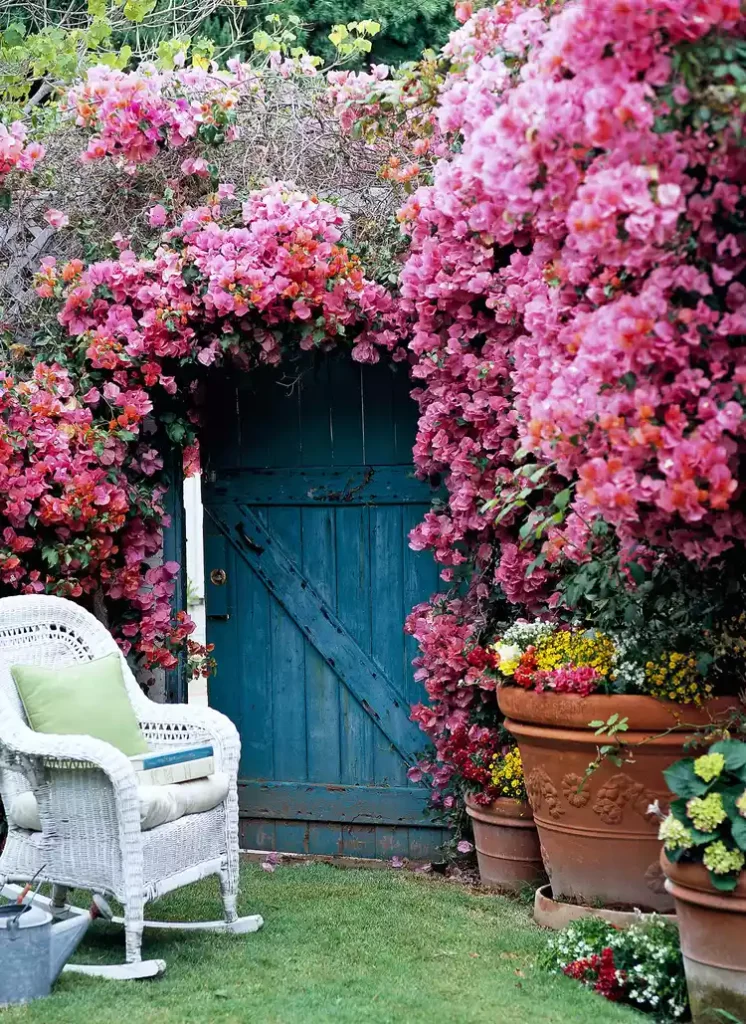
Image Credit: BHG

Image Credit: BHG
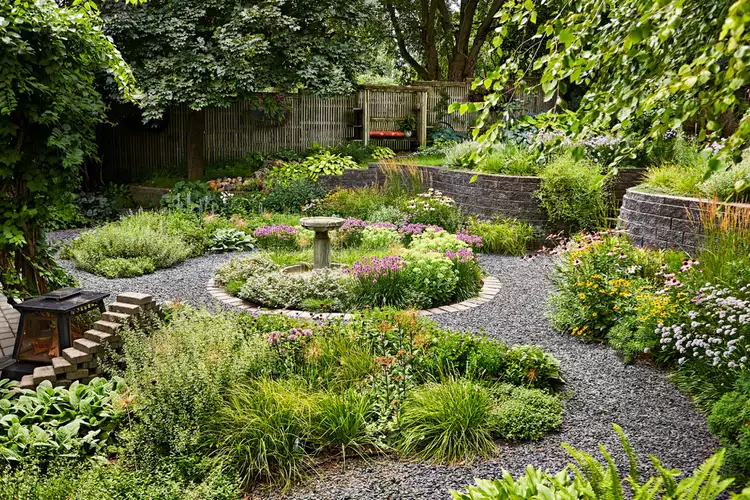
Image Credit: BHG
“Border gardens help to encircle, outline, and define spaces in landscapes large and small, while adding tons of color and texture. Fill your borders with low maintenance perennials and small shrubs to create a comfortable and easy-care small garden.” BHG

Image Credit BHG
Eliminate Grass and Lawn – Use Pots for added interest
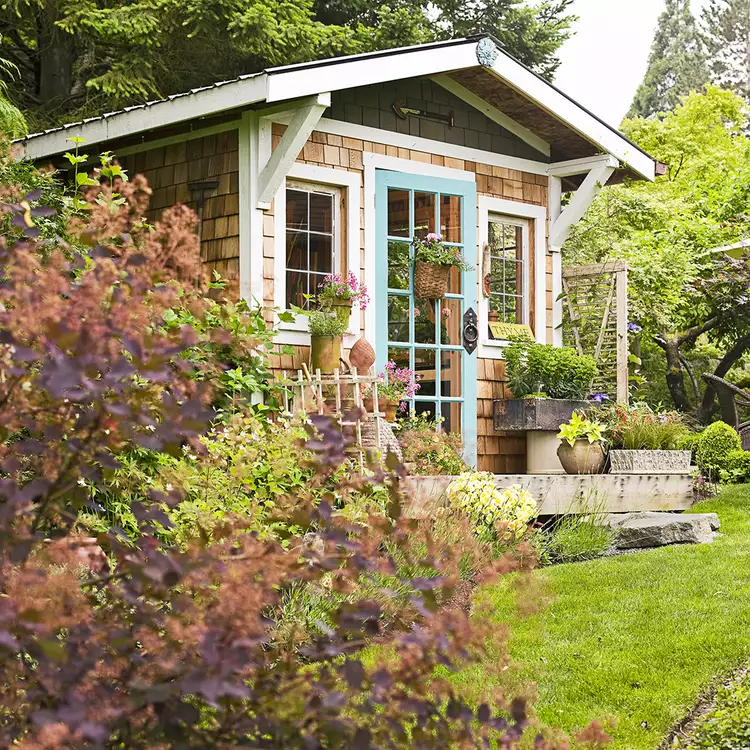
Image Credit: BHG
“Garden sheds don’t have to be only utilitarian structures. Besides housing gardening tools and supplies, these backyard buildings can create a charming focal point for your backyard and additional outdoor living space. Create an outdoor oasis you’ll want to retreat to all summer with these gorgeous garden shed ideas.” BHG
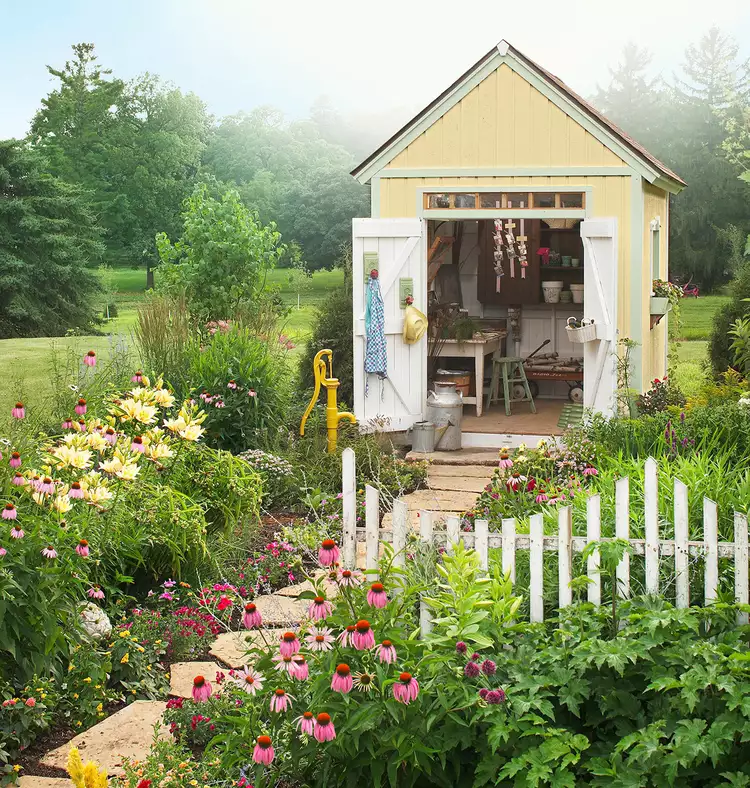
Image Credit: BHG
“Garden sheds do more than provide outdoor storage. They can create a comfortable workspace, provide a backdrop for prized plants, or be a destination where you can relax and entertain friends.” BHG
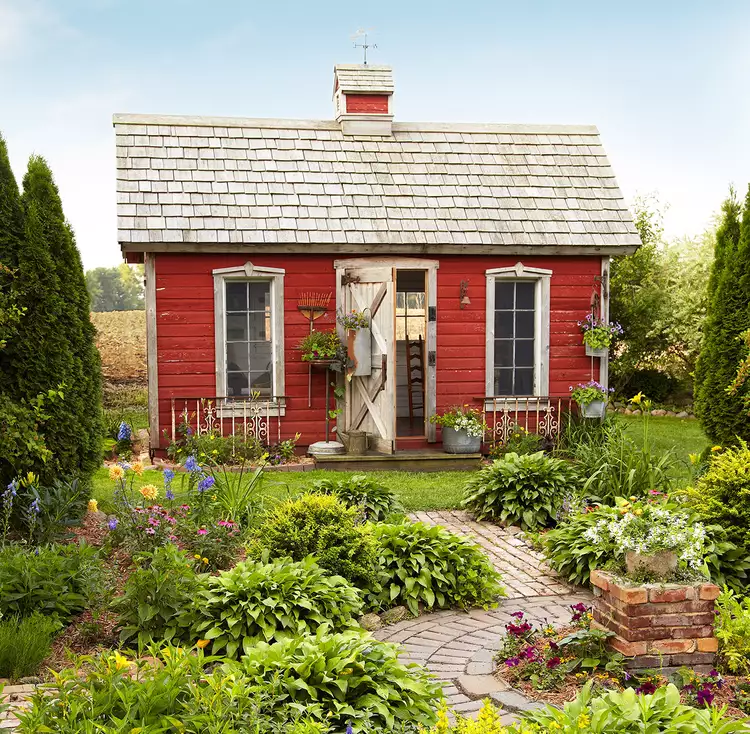
Image Credit: BHG
“Salvaged windows and barn-board siding lend vintage character to this garden shed. Thoughtful details, such as the window trim on the exterior and the cupola perched on the roof, transform what could be a basic storage shed into an inspiring garden-side retreat. Don’t be afraid to use a bold color for your garden shed for even more personality. Because sheds are smaller, a bright hue like red will only add color rather than overwhelm, as it might on a larger house or garage.” BHG
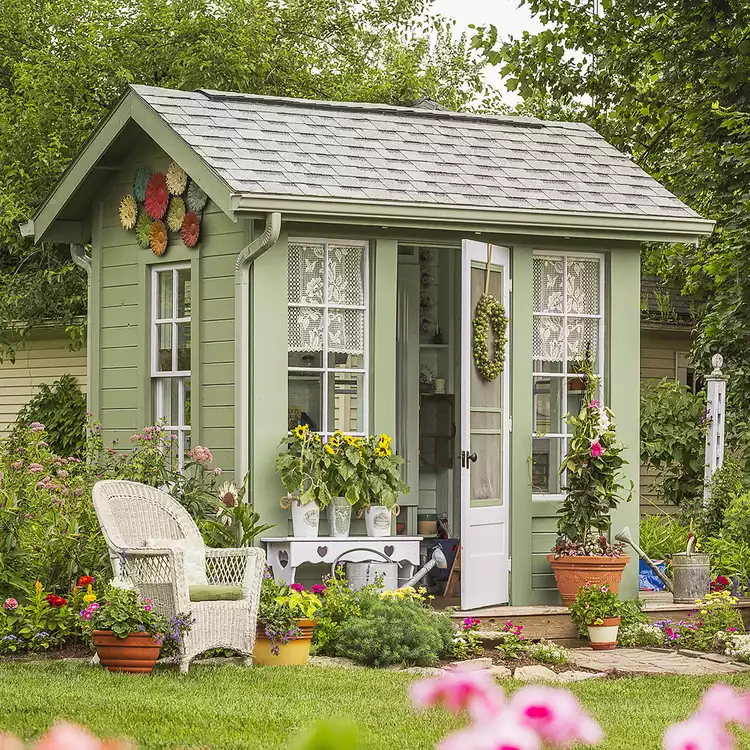
Image Credit: BHG
“This cottage potting garden shed borrows design inspiration from the main house, using the same earthy green and white paint colors. Extras like a deck, stone path, and cottage-style mixed planting borders make the backyard shed design feel more like a home than just a place for storage. Several garden shed decorating ideas, including lace window curtains, a quaint bench, and outdoor art, add homey appeal. In a practical move, downspouts ensure rain doesn’t damage the plants that surround the building.” BHG
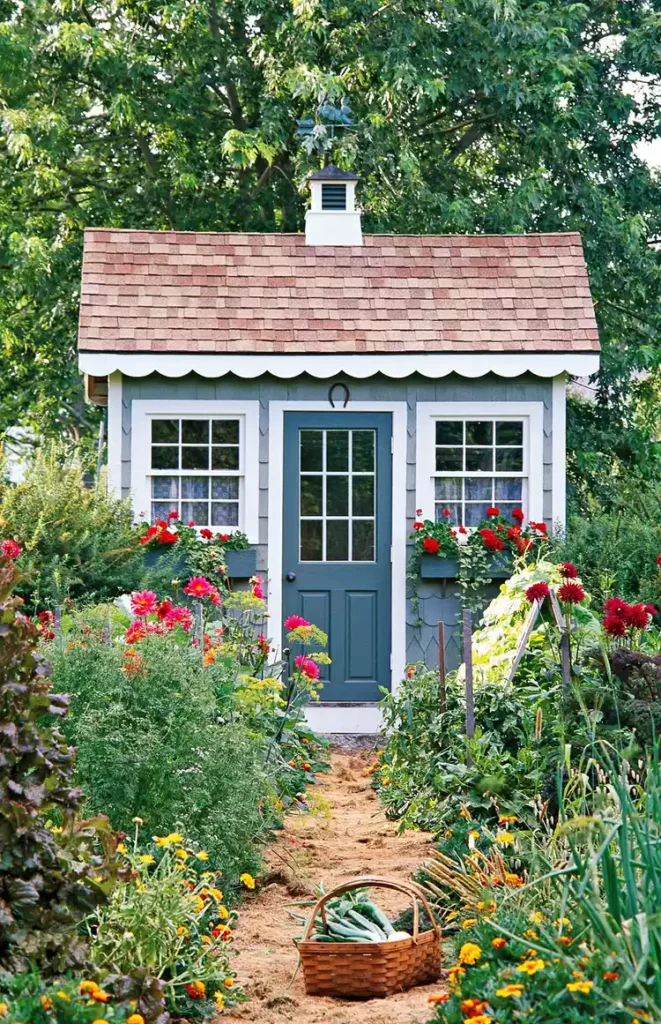
Image Credit: BHG
“This garden shed matches its exuberant cottage garden surroundings. Architectural details, such as the scalloped trim, clapboard siding, window boxes, lace curtains, and weather vane, make it the perfect focal point for the garden—terra-cotta-colored roof shingles and a gray-blue exterior fashion a just-right color palette.” BHG

Image Credit: BHG
“Gothic windows add to the antique feel of this garden shed. Stamped-metal roofing and hanging planters on the fence add to the arched motif. A row of boxwoods brings order and definition to the entry garden.”
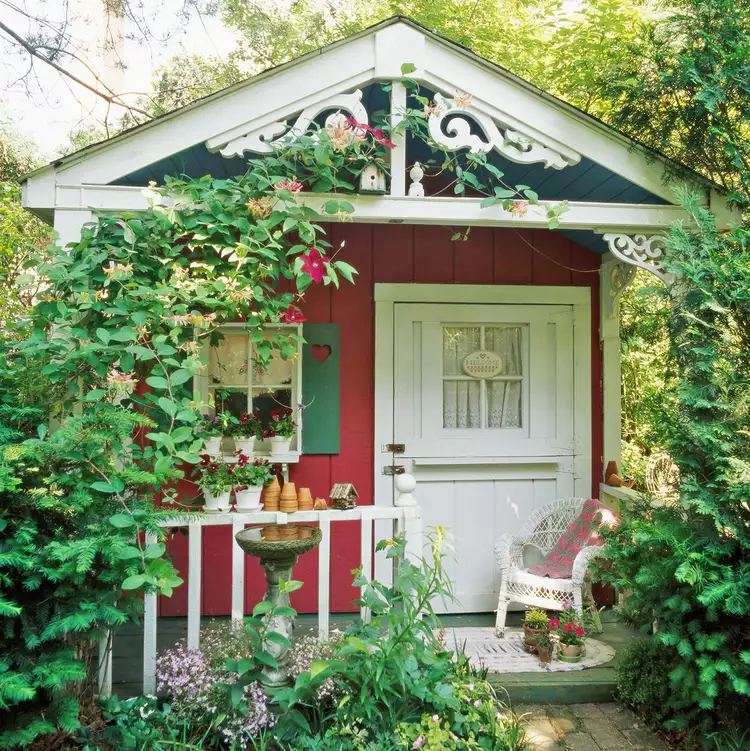
Image Credit: BHG
“Detailed scrollwork on the porch of this potting shed gives it a level of playfulness. Heart-shaped cutouts in the shutters, a Dutch door with lace curtains, and a white wicker chair complement the casual country look. Although the structure is slightly hidden, rich red paint ensures this garden shed doesn’t get lost in the landscape.” BHG
Hedgerows to increase privacy in Gardens
“Hedgerows, also known as shelter belts or wind breaks, are living fences of trees, shrubs, groundcovers, vines, and other plants.
“Hedgerows have been used for centuries in English and American landscapes to primarily divide agricultural fields or residential properties. In addition to marking property lines, incorporating or maintaining hedgerows offer the following important benefits:
“1. Screening of adjacent properties. While fences are often used to create privacy areas on residential properties, using tall plants to provide a visual separation costs less than constructing and maintaining fences. Although it takes a few more years to establish a dense vegetated screen than a constructed privacy fence, there are often no municipal height restrictions for vegetation as there are with fences. Also, a well designed and planted vegetation barrier can be an attractive alternative to many lower cost fence materials.
“2. Buffering winds, noise, and dust. Establishing dense tree lines on the north sides of properties (often in more northern landscapes) buffers homes from cold winter winds, reducing winter heating costs. Dense vegetated screens are also effective barriers to dust from neighboring properties and nearby unimproved roadways. While hedgerows are not as effective as sound walls to reduce nearby noise, even narrow planting strips will reduce some sounds. The wider the hedgerow the more noise will be deflected. Choose evergreen plants to ensure some noise reduction in winter.
“3. Enhancing wildlife. Dense shrub and tree areas are important food, nesting, and travel routes for many species of birds and other wildlife. If you have mostly lawn on your property, one of the most effective ways of attracting more animal species is to provide tree and shrub zones. Many species of plants that are found in hedgerows, including beautyberry (Callicarpa americana), wax myrtle (Myrica cerifera), and hollies (Ilex spp.) are also important food plants. The more species of wildlife plants that are included will allow the maximum diversity of animals utilizing the area. To provide for the widest variety of wildlife, hedgerows should have diverse layers of vegetation, including canopy trees, understory trees, tall and low shrubs, and groundcover layers. Animals that do not travel through open lawn areas will use hedgerows to move from important watering, nesting and feeding sites. Many bird species will use dense vegetation for their nesting areas. For wildlife use, hedgerow widths worked best at a minimum distance of twenty feet.
“4. Reducing soil erosion and improving water quality. Dense vegetated barriers slow water runoff during rainstorms, allowing soil particles to become trapped amongst grasses and dense stems. Slower moving water has a better chance of infiltrating into the soil instead of moving across the ground. Controlling soil erosion and allowing for better water infiltration is very important along drainage ways, stream edges, and other water bodies to reduce water pollution. While narrow riparian buffers can help some, hedgerows of thirty feet or more have shown the greatest filtration benefits.
Establishing Hedgerows
“Depending upon its function, hedgerows can be fairly easy to establish. If a property line is currently being mown and maintained, about the easiest and least expensive way of establishment is to simply stop mowing the desired hedgerow width and allow it to grow up into woodland. Grasses, wildflowers, shrubs, and tree seedlings will be the first to establish from existing or nearby plant sources. As birds and other wildlife use the area, they will also bring in seeds from other places. Depending upon the soil and moisture conditions, an effective privacy screen can develop within the first five to seven years. Invasive exotic plant species, such as privet (Ligustrum sinense), tallow tree (Sapium sebiferum), Japanese honeysuckle (Lonicera japonica) and others often invade these areas. These can be managed for by the occasional spot use of herbicides or mechanical removal.
“For a more managed planting, trees and shrubs can be established from container plants. For faster screening, plant shrub species a little closer together than their mature width. Select several species of large trees, smaller trees and shrub types; especially ones with wildlife benefits. A wide variety of wildlife plant types may be found on the Attracting Bird, Butterfly, and Hummingbird pages. To minimize watering and maintenance requirements, plant in the fall or winter and use tough plant species that require little care. A recommended list of plants may be found in The Low Maintenance Landscape article. Mulching the area around the plants will help maintain soil moisture, and supplemental watering may be necessary until plants are established. The linear nature of a hedgerow works well with the use of soaker hoses for irrigation.”
Robert F. Brzuszek, Assistant Extension Professor, The Department of Landscape Architecture, Mississippi State University.
Recommended plant species for hedgerows in average residential sunny conditions are listed below. See plant types for shady or wet areas.
| Large Trees | ||
| COMMON NAME | BOTANICAL NAME | CHARACTERISTICS |
| Sugar hackberry | Celtis laevigata | Fast growing, low maintenance |
| Green ash | Fraxinus pennsylvanica | Fast growing, wildlife food |
| Sweet gum | Liquidamber styraciflua | Fast growing, wildlife food, tough |
| Sycamore | Platanus occidentalis | Fast growing, wildlife food |
| Cottonwood | Populus deltoids | Fast growing, butterfly host |
| Southern red oak | Quercus falcata | Wildlife food |
| Swamp chestnut oak | Quercus michauxii | Wildlife food |
| Water oak | Quercus nigra | Fast growing, wildlife food |
| Nuttall oak | Quercus nutallii | Wildlife food |
| Southern magnolia | Magnolia grandiflora | Evergreen, wildlife food |
| Slash pine | Pinus elliottii | Fast growing, evergreen |
| Loblolly pine | Pinus taeda | Fast growing, evergreen |
| Red maple | Acer rubrum | Fast growing, wildlife food |
| American holly | Ilex opaca | Wildlife food, evergreen |
| Small Tree | ||
| COMMON NAME | BOTANICAL NAME | CHARACTERISTICS |
| Ironwood | Carpinus caroliniana | Tough |
| Redbud | Cercis canadensis | Spring flowers |
| Parsley hawthorne | Crataegus marshallii | Wildlife food |
| Green hawthorne | Crataegus viridis | Wildlife food |
| Persimmon | Diospyros virginiana | Wildlife food |
| Silverbell | Halesia diptera | Spring flowers |
| Witch hazel | Hamamelis virginiana | Fall color |
| Deciduous holly | Ilex decidua | Wildlife food |
| Crab apple | Malus angustifolia | Wildlife food |
| American plum | Prunus americana | Wildlife food |
| Shining sumac | Rhus copallina | Wildlife food |
| River birch | Betula nigra | Fast growing |
| Black cherry | Prunus serotina | Wildlife food |
| Winged elm | Ulmus alata | Low maintenance |
| Yaupon holly | Ilex vomitoria | Evergreen, wildlife food |
| Eastern red cedar | Juniperus virginiana | Evergreen |
| Wax myrtle | Myrica cerifera | Evergreen, wildlife food |
| Large shrub | ||
| COMMON NAME | BOTANICAL NAME | CHARACTERISTICS |
| Arrowwood viburnum | Viburnum dentatum | Wildlife food |
| Beautyberry | Callicarpa americana | Wildlife food |
| Sweetspire | Itea virginica | Spring flowers |
| Summersweet | Clethra alnifolia | Spring flowers |
| Cassine holly | Ilex cassine | Wildlife food |
| Sweet olive | Osmanthus americanus | Evergreen |
| Elderberry | Sambucus canadensis | Wildlife food |
| Bamboo | Phyllostachys spp. | Dense screen |
| Groundsel bush | Baccharis halimifolia | Fall flowers |
| Gallberry holly | Ilex glabra | Wildlife food, evergreen |
| Winterberry holly | Ilex verticillata | Wildlife food |
| Tree huckleberry | Vaccinium arboreum | Wildlife food |
| Elliott’s blueberry | Vaccinium elliottii | Wildlife food |
| Vine | ||
| COMMON NAME | BOTANICAL NAME | CHARACTERISTICS |
| Cross vine | Bignonia capreolata | Spring flowers, hummingbirds |
| Trumpet vine | Campsis radicans | Spring flowers, hummingbirds |
| Clematis | Clematis virginiana | Fall flowers |
| Yellow Jessamine | Gelsemium sempervirens | Evergreen |
| Morning glory | Ipomoea spp. | Summer flowers |
| Coral honeysuckle | Lonicera sempervirens | Hummingbirds |
| Maypop | Passiflora incarnate | Butterflies |
| Greenbriar | Smilax lanceolata | Evergreen, wildlife food |
| Grape | Vitis rotundifolia | Wildlife food |
Robert F. Brzuszek, Assistant Extension Professor, The Department of Landscape Architecture, Mississippi State University.
Discover more from Jacki Kellum
Subscribe to get the latest posts sent to your email.